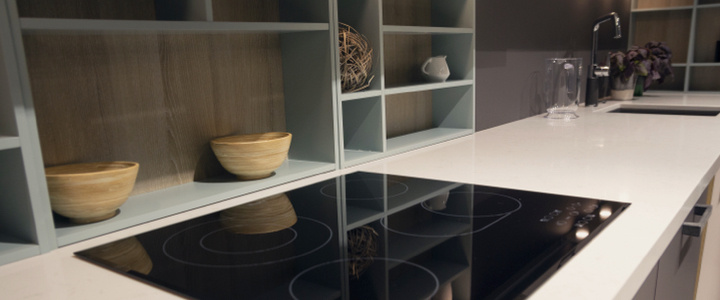
Hob component guide for a tailored-made light signalling
The kitchen appliance sector is increasingly integrating high performance and aesthetics, offering solutions that bring professional technologies directly into consumers' homes, and maintaining a focus on the design of both finished products and visible components. Of these, the hob, being one of the main elements of the kitchen, contributes significantly to defining the look and feel of this environment. In this article, we provide an overview of hob components and integrable lighting solutions for high-quality devices.
Specifically, we talk about:
- The basics of the hob: what to focus on?
- Hob replacement: the importance of preventive maintenance
- Hob accessories: the tools that simplify cooking
Would you like to find out which lighting solutions can be integrated into the latest generation of household appliances? Click the button below and download the brochure dedicated to electromechanical and light indicator components for the HoReCa sector, professional coffee machines and professional appliances.
The basics of the hob: what to focus on?
The hob, essential in the preparation of meals, consists of several key elements. The most common types include gas, electric and induction hobs. Let us see them in detail.
Gas hobs
Gas hobs are among the most popular and convenient hobs, equipped with easily adjustable burners of various sizes. The gas hob uses open flames fuelled by natural or propane gas, offering precise temperature control. It can be made of stainless steel, enamelled steel or glass. Stainless steel requires frequent cleaning to maintain its lustre, while enamelled steel offers a wide range of colours and finishes. The glass hob, also known as "crystal", is particularly easy to clean as it does not overheat.
Induction hobs
Induction hobs use electricity to generate magnetic fields that directly heat the pan. This system concentrates all the heat produced on the surface of the pan without dispersion, significantly reducing cooking time and minimising the risk of scalding. The most innovative induction models are equipped with residual heat warning, pan detection, maximum temperature lock, timer and the “child safety” function (which prevents accidents by locking the display and hob buttons).
Electric glass-ceramic hobs
Glass-ceramic hobs operate by electricity, heating a circular heating element which in turn heats the glass-ceramic surface. Although they are less energy efficient than induction hobs, they are still a common choice. However, they require pans with perfectly flat bottoms and can vary in cost, influenced by customisation options. Their smooth surface makes them easy to clean and they are equipped with indicator lights that signal whether the hob remains switched on.
Hob replacement: the importance of preventive maintenance
Regular preventive maintenance is essential to ensure the proper functioning and safety of the hob over time. Replacing the hob is a crucial activity to prolong its life and prevent future inconveniences.
Periodically, it is advisable to inspect the hob carefully for signs of wear or damage. Heating elements, burners and cooking surfaces must be cleaned regularly to remove food residues and grease that could impair performance and hygiene.
In addition, it is important to ensure that the gas connections (in the case of a gas hob) are free of leaks and that the safety switches are functioning. Regular inspection by qualified personnel can help prevent potential faults and ensure a safe cooking environment.
Hob accessories: the tools that simplify cooking
Today, we are witnessing an improvement in quality and a progressive enhancement of the design of modern kitchen appliances: highly efficient solutions are offered that meet the style and customisation needs of a rapidly changing market. One of the main trends in this respect concerns the development of cooking appliances that incorporate the concept of “multifunctionality”.

Hybrid appliances that can perform multiple functions and meet different needs simultaneously. This is particularly evident in extractor hobs: complete cooking systems that realise an intelligent integration of the induction hob and the extractor element, thanks to premium hoods with a sophisticated design. These are innovative solutions that combine advanced functionality with refined aesthetics and a minimal footprint in the kitchen. Hob built-in hoods collect, capture and filter fumes directly at the source, providing high extraction efficiency in both extraction and recirculation modes.
As far as the light indicator proposal for these devices is concerned, one of the latest trends, also found among the exhibitors at EuroCucina 2024, is the integration of light profiles that enhance the elegant surface of the hob or further highlight the on/off and adjustment knobs and touch controls. At SLIM, we develop customised backlighting solutions and light profiles with Strip LEDs, fibre optics and customised solutions with SMD LEDs
Are you a manufacturer of cooking appliances? Are you interested in a customised lighting solution that can add value to your device? Send us your request, our technical department will be able to help you.
